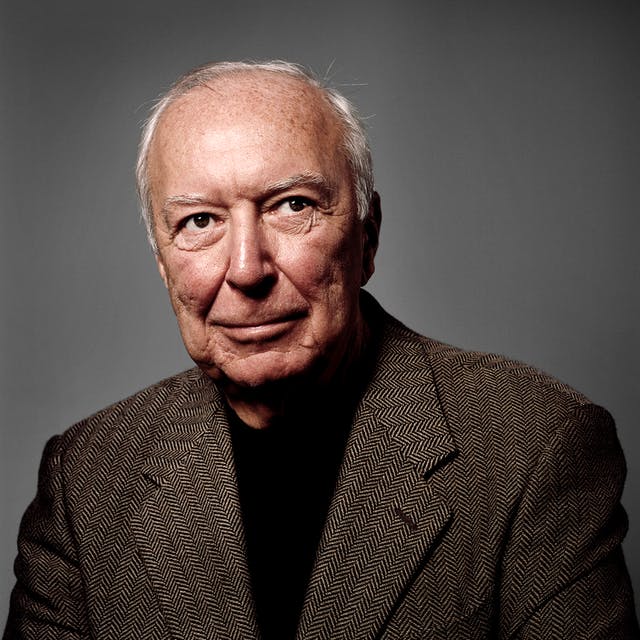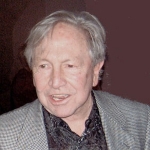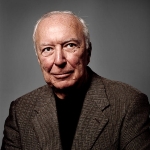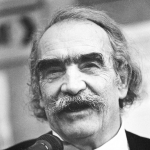Background
Mary Bauermeister was born on September 7, 1934, in Frankfurt am Main, Darmstadt, Germany. She is a daughter of Wolf Bauermeister, a professor of genetics and anthropology, and a singer Laura Bauermeister.
1964
New York City, New York, United States
Mary Bauermeister in 1964 in New York City Atelier. Foto by Mittelrhein-Museum
1965
Mary Bauermeister holding a glass sphere. Photo by Hans Namuth
2012
Mary Bauermeister with one of her sculptures.
2012
Mary Bauermeister near one of her works.
Ulm, Bavaria, Germany
The building of the former Ulm School of Design (Hochschule für Gestaltung) where Mary Bauermeister studied from 1954 to 1955.
Young Mary Bauermeister surrounded by some of her works.
Mary Bauermeister. A photo by Oliver Mark.
Mary Bauermeister
Mary Bauermeister with one of her crystal objects sculptures called 'Linsenkästen'.
Mary Bauermeister near one of her crystal creations.
Mary Bauermeister
Mary Bauermeister presents one of her artwork to the director of the Bonn Women's Museum Marianne Pitzen (on the left) and the artist Curt Delander (on the right).












artist musician painter sculptor
Mary Bauermeister was born on September 7, 1934, in Frankfurt am Main, Darmstadt, Germany. She is a daughter of Wolf Bauermeister, a professor of genetics and anthropology, and a singer Laura Bauermeister.
Mary Bauermeister studied at a secondary school in Cologne, Germany from 1946 to 1954. Günther Ott noticed her artistic talent and helped her to develop her skills. It was then when Bauermeister produced her debut works in charcoal, colored pencil, and pastel on paper.
In 1954, Mary Bauermeister moved to Ulm, Germany where she entered the Ulm School of Design (Hochschule für Gestaltung, doesn’t exist nowadays). After attending the basic courses by Max Bill and Helene Nonné-Schmidt for a year, Bauermeister realized that the curriculum didn’t correspond to her personal views on art process.
She left the School and enrolled at Staatlichen Schule für Kunst und Handwerk (State School of Arts and Crafts) in Saarbrücken, Saarland, Germany. She spent two years at the School experimenting with different photographic techniques.
In the summer of 1961, Bauermeister attended Karlheinz Stockhausen's lectures on composition at Darmstadt International Summer Courses for New Music in Darmstadt. It was then when she composed her ‘Painterly Conception, a painter's score – a composition for the six senses – or instructions for action’.
Mary Bauermeister started her career as a free-lance artist in Cologne where she had earned money selling her pastel works since 1956. A year later, she established her studio in a flat she rented in the old quarter of the city. Soon, the studio became a very popular place among avant-garde poets, composers and visual artists, including the members of the newly-born artistic movement Fluxus. Regular concerts and exhibitions held at the studio attracted such artists and musicians as Hans G Helms, David Tudor, John Cage, Christo, Wolf Vostell, George Brecht, and Nam June Paik who in their turn had a possibility to share their works rejected by the official artistic circles. Such gatherings were organized until October 1961.
The following year, Mary Bauermeister had her debut solo exhibition held at the Stedelijk Museum in Amsterdam. Many works from 1958-1962 were accompanied by the tape recordings of Stockhausen and other composers. In 1963, the show was demonstrated at the Groninger Museum in the Netherlands. The same year, Bauermeister’s works were included in the group exhibition of works by Robert Rauschenberg, Jasper Johns, Alfred Leslie, and Richard Stankiewicz. She was so impressed by the art of Rauschenberg and Johns that she decided to pursue her career in New York City where she came in October 1962.
At the end of the next year, Mary Bauermeister started her collaboration with Galeria Bonino of Alfredo and Fernanda Bonino. Supported by them, Bauermeister entered successfully the New York art market with – her works were represented at all important exhibitions of the city. The artist pursued to present her artworks at the gallery throughout the 1960s. In March 1964, her first lens boxes were demonstrated to the public for the first time at her solo show. The similar exposition took place the following year.
In addition to the shows, the artist took part at the end of the decade in various group shows in the United States and Europe, including the shows of contemporary American art, in such art places as the Whitney Museum of American Art in New York City, the Schwarz Gallery in Milan, Italy, and the Museum of Contemporary Art in Chicago among others.
At the beginning of the 1970s, Bauermeister came back to Germany where the first retrospective of her works organized in the Mittelrhein-Museum in Koblenz celebrated the 20th anniversary of her career in 1972. The same year, Bauermeister had her first solo show at the Arturo Schwarz Gallery in Milan, Italy. At the end of the decade, the artist became involved in the design of pleasure and meditation gardens. Using water surfaces, crystals and prisms in the projects, she elaborated design for such gardens in the Landeszentralbank Wiesbaden, the Kölnische Rückversicherung, and for the Federal German Foreign Office in Bonn among others.
In 1985, Bauermeister participated in the International Crystallography Congress at the Bielefeld University and presented there her works in a solo exhibition. The event was followed a year later by the show ‘The Sixties – Cologne's road to becoming an art metropolis – from happening to art market’ at the Cologne Kunstvereinstages. In 1988, a couple of Bauermeister’s works were shown at the Guggenheim Museum in New York City.
Mary Bauermeister has participated in important art events throughout the 1990s and the 21st century. The artist has presented her creations in Cologne, Ludwigshafen, New York City, Los Angeles, Washington D.C., Vancouver, Milan, and other cities.
In 2004, the Cologne Museum Ludwig bought her sewn picture from the tripartite workgroup Needless Needles to celebrate her 70th birthday. Seven years later, Mary Bauermeister published her autobiographical book titled ‘Ich hänge im Triolengitter - Mein Leben mit Karlheinz Stockhausen’ (Hanging in a triplet grid - my life with Karlheinz Stockhausen). The edition was followed by a retrospective at Bonn Women's Museum the next year.
In 2015, Bauermeister created a new series of pointillistic works on canvas using her techniques developed in the 1960s. Two years later, the artist became connected with the Michael Rosenfeld Gallery in New York City, an exclusive representative of her art today.
Nowadays, Mary Bauermeister now lives in Rösrathnear, Cologne.
Mary Bauermeister is an accomplished artist whose poetic works full of fascinating riddles are widely recognized. In the 1960s, her famous wooden sculptures and installations called ‘lens boxes’ were purchased almost by every important gallery.
Bauermeister’s creations have exhibited alongside the works by such well-known artists as Marcel Duchamp, Joseph Cornell, Joseph Beuys, Nam June Paik, and Andy Warhol.
Nowadays, the art of Mary Bauermeister is widely represented in different museums and galleries in Germany and United States, including the Rheinisches Landesmuseum Bonn, the Hirshhorn Museum and Sculpture Garden in Washington, D.C., The Museum of Modern Art in New York, the Los Angeles County Museum of Art, and the Solomon R. Guggenheim Museum of Art among others.
In 2019, Bauermeister’s sculpture ‘Neither-Or’ was purchased at Christie's in New York City for $85,000.
Mary Bauermeister is an Honorary citizen of the city of Rösrath.
Quotations: "I only followed an inner drive to express what was not yet there, in reality or thought. To make art was more a finding, searching process than a knowing."
Mary Bauermeister married Karlheinz Stockhausen on April 3, 1967, in San Francisco. The family produced one daughter named Julika and a son Simon.
Mary and Karlheinz had lived together until their divorce in 1972.
Later, Bauermeister had romantic relationships with an American composer David C. Johnson with whom they had a daughter named Sophie on July 1972. In a couple of years, Mary Bauermeister gave birth to her third daughter Esther whose father was the Israeli artist Josef Halevi.




